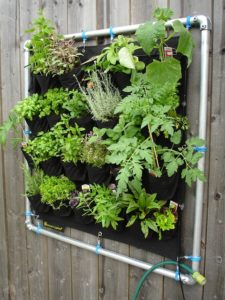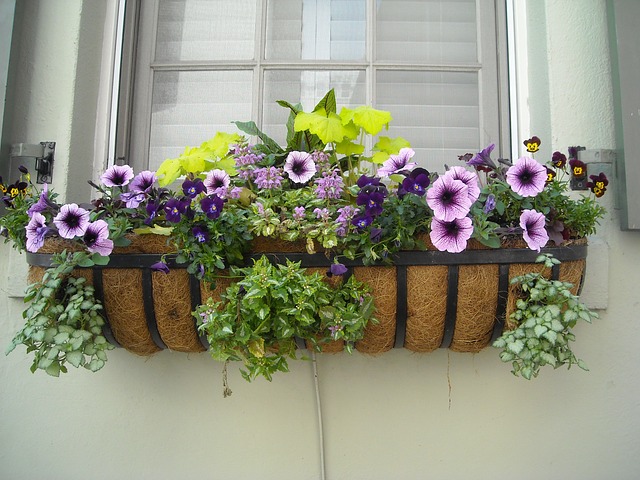Edible gardening is trending now. Not that you have to go with everything that is trending in the world, but if it allows you to make a positive impact in your life then I say, go for it!
Space is a challenge when you are gardening in the urban areas. However, this is not an excuse to let gardening be one of those resolutions made on new year’s eve with no intentions to implement.
As long as you have an empty wall or fence, you can engage in small-scale gardening. This type of gardening is not limited to crops only; you can grow flowers, perennials, and annuals, which makes it popular in landscaping.
The Basics of Vertical Gardening
Are you ready to get your hands dirty now? Here is where to start:
Choose Your Garden Type
The main types of vertical gardening are:
- Container-style Garden – Just like the name suggests you will use containers or pots in planting the crops. You can display them in rows, planters, or stack them.
- Pocket Garden – This gardening features plants tucked in pockets made of canvas or felt.
- Wooden-wall Planters / Plastic Containers – There are specific wooden planters made for use in vertical gardening. Due to the large space, a wire mesh is necessary to prevent the container contents from spilling.
Placement
You can have the garden indoors or outdoors. If the plants require much sunlight, they should be placed outside. There are plants which do well indoors and outdoors too. You can use modular containers which can be hanged out in summer and moved indoors in winter.
Choose the Plants
You can grow vegetables, herbs, succulents and trailing varieties. Because the room the plants will have for growth and the flexibility will be limited, your choice should factor in these aspects. Herbaceous plants are more flexible than the woody plants. You can mix the plant varieties, for a more beautiful garden and produce.
Pair Plants with Similar Growth Patterns
You can go for all-shade or all-sun plants. The growth factor is crucial too. When you have plants with different growth habits paired together, the dominant one will prevail, hence killing the other one.
Learn Planting Basics
 People do not wake up one day, decide to have a garden and actualize this instantly. Planning is crucial, and learning the basics in planting is one of the activities in planning. Learn about the soil, water requirement, and care of the plants. The soil used for potted plants is supposed to have a high moisture content, and be able to hold water for long.
People do not wake up one day, decide to have a garden and actualize this instantly. Planning is crucial, and learning the basics in planting is one of the activities in planning. Learn about the soil, water requirement, and care of the plants. The soil used for potted plants is supposed to have a high moisture content, and be able to hold water for long.
Gravity is an important factor in vertical gardening, given that the plants grow upwards. Gravity pulls water down. Thus, plants which can survive with less water should be situated at the top-most part of the garden.
Prep the Plants
You should grow the crops on a flat ground for several weeks for the roots to be established. It will be a challenge for the roots to grow well vertically because gravity pulls the water to the lower regions. The elevation of the container should be done in steps instead of taking everything up at once.
Consider Drip Irrigation
The maintenance work is demanding during the initial days. The soil available for the potted crops is limited, meaning you have to water them frequently. If you are forgetful or busy with your career, a drip irrigation system can save the day. It can be a simple one like using water bottles, but there are sophisticated ones which come with timers and hoses.
Retain Some Extras Plants Or Seeds For Replacements
Hardly will you have 100% success with the plants you start with. Thus, do not beat yourself up for having some dead plants. You can just replace them.
Steps in Setting up a Vertical Garden
Now that you have learned the basics of vertical gardening, it is time to get down to the real work.
Choose a wall
If you have an ugly wall, you will be surprised at how much beauty vertical gardening can bring to it. However, any wall can benefit from this. Unless you are planting heavy crops, the weight load is not a big deal. The sunlight demands of the crops you are planning to plant should guide you in making the best choice. The wall should offer the best growth conditions for the crops.
Build the Frame
The basic structure of any vertical garden is a 3-layer frame made in a sandwich manner, fabric and sheeting. You should work on the whole setup before hanging. Wood and metallic frames are not recommended because they add to the weight. Plastic is the best material.
Attach the Plastic Sheeting
The frame should be covered with a plastic sheet. It backs the fabric layer and keeps water on your walls. PVC sheets do a good job, but they should have ventilation when the wall is wooden.
Attach Your Fabric
The fabric is the material the plants will be living on, and it should be firmly attached to the frame. It is responsible for holding water for the plants. Any material that can hold water, and not end up rotting can be used a fabric
The fabric should be at least two layers. Use stainless-steel staples and galvanized screws to attach the fabric. Ensure there are no wrinkles or buckling, and the fabric is taut.
You can go ahead and hang your plants on the wall and fix the irrigation system after the wall is entirely set up. The fun part is designing the wall using the plants. There are many design possibilities in vertical gardening. If the plants can grow up to 3 feet on the wall, you will get a nice shed. However, ensure the plants in the shade have minimal light requirements.
Some species will grow up to 8 feet. Drooping occurs at such a height, causing a waterfall effect. As much as this is a great sight, anything underneath will be smothered. You can be dramatic at mixing the plant species and shaping them. If the garden is not making your neighbor’s jaw drop, you need to take it a notch higher!
Conclusion
You can use the empty jar analogy to understand the benefits of vertical gardening. The fuller the jar, the healthier the lifestyle. You will make a greater environmental impact as well. I have given you all the tips and guidelines in vertical gardening. Will you actualize this? I hope you do!
Author – Alex Harris
Author Bio
Alex is a firewood cutting fan and a chainsaw expert. He owns a ranch in Montana where he lives with his wife and son. He is a tech cowboy who enjoys writing his blog ElectroSawHQ.com.



